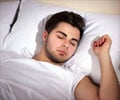How do you Prepare Before Polysomnography?
It is done in a Sleep Disorders Department or Neurophysiology Lab within a hospital or at a specialized sleep center. The following routine instructions are usually given:
- Avoid tobacco, alcohol and caffeinated beverages a few days before the test as they may interfere with the results

- Avoid daytime sleeping before the test and sleep well during the night for a couple of days before the test
- You must give a list of all regular medications and some medications that may interfere with test results may be temporarily stopped
- Use of gels and lotions is preferably avoided before the test as they interfere with the activity of electrodes
- You may be asked to bring a sleep diary about time of going to bed, time of waking up and how many times you woke up at night, and other such habits
- Take your nightwear and toothbrush for overnight sleep studies
- Carry a book or some activity to keep you occupied between testing periods in case you are having maintenance of wakefulness test (MWT) or a multiple sleep latency test (MSLT)
What Happens During Polysomnography?
- You will report in the evening and stay overnight in the allotted room. You can carry items that you normally use for your bedtime routine and can sleep in your night clothes
- The room will be dark and quiet and you will have the room to yourself
- The room is equipped with a low-light video camera, so that the staff monitoring you can see what is going on in the room when the lights are switched off. The room also has a sound system, so that you can talk to them and they can respond from the monitoring room
- When you are ready to go to sleep, one of the technicians will place electrodes on your scalp, temples, legs and chest using a tape or glue. The sensors are attached to a computer by means of wires. A small device is also clipped on your finger or ear to measure the oxygen levels in your blood
- The following parameters will be monitored during the polysomnography test:
- Brain wave patterns
- Pattern of breathing
- Heart rate
- Blood pressure
- Blood oxygen level
- Body position
- Eye movements
- Movement of chest and belly
- Limb movements
- Snoring or other sounds during sleep
- Even if you are unable to sleep as well as you do at home, this will not affect the test results. A full night’s sleep is not required to obtain precise results of PSG
- Additionally, continuous positive airway pressure (CPAP) treatment for sleep apnea may be initiated during the study. A device with a tight fitting nose piece is applied through which a gentle stream of air is delivered to improve your breathing. This is termed a split-night sleep study. During the first half of the night, the physiologist records your sleep patterns and if you are found to have a condition termed sleep apnea, the second part of the study is conducted where the physiologist will wake you and apply the CPAP device. They will then measure how well you sleep with the CPAP device
- Once the study is over, the nurse/physiologist will remove the electrodes or you may be asked to remove them by yourself in the morning
- Multiple Sleep Latency Test (MSLT) - MSLT measures how fast you can fall asleep during the day in a quiet environment. This is also termed daytime nap study and usually immediately follows the night-time sleep study
After the lights are turned off the sensors will check if you are asleep or not. If you are asleep, you will be woken up after 15 minutes. If you don’t fall asleep even after 20 minutes, the test will be stopped - Maintenance of Wakefulness Test (MWT) - This test measures the ability of a patient with diagnosed sleep disorder to stay awake and alert in a given period of time. This test may be done to monitor response to treatment in a patient diagnosed with a sleep disorder
What Happens After Polysomnography and What are the Risks?
After the completion of the test, you will be discharged and will be given a follow-up appointment to obtain the results and review them with your doctor.
The results of the PSG test give lots of information from the sleep patterns and other parameters that are measured. The data will be evaluated by the neurophysiologist and a medical report will be generated which you will obtain in about two weeks.
You will then be reviewed by your physician who will discuss the results with you and suggest suitable treatment or further tests if indicated.
Risks and Complications
Polysomnography is a painless and non-invasive test and relatively free of risks. Possible risks include:
- Skin irritation where the sensors are attached

- Fall from bed (reported in some cases)










